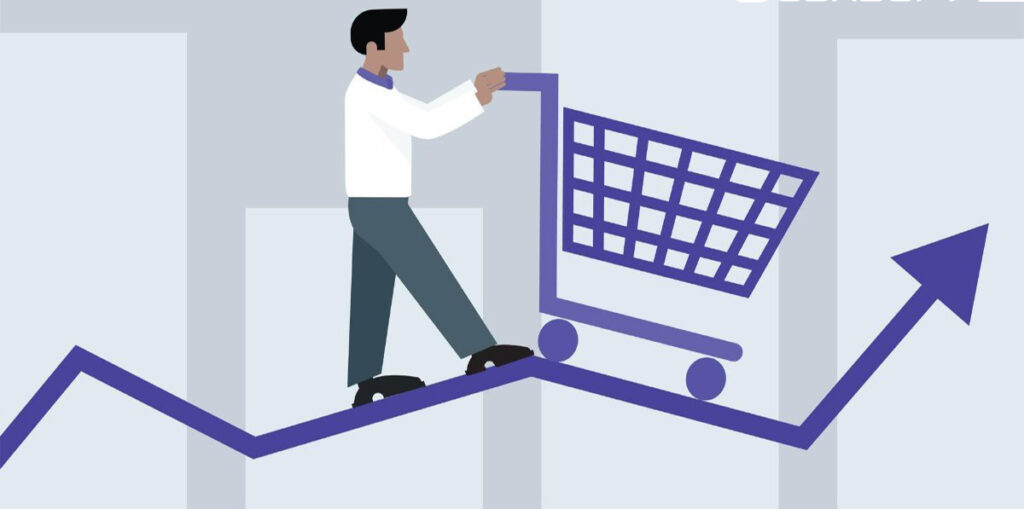Table of Contents
When choosing air tickets and planning a vacation, you may have noticed such a situation more than once that you just looked at the price, and while you were finishing drawing up the travel budget, the ticket price increased. Sometimes, the price can change while you fill in the purchase details. Dynamic prices, which can be easily adapted to any market situation, allow you to control revenues from products and services.
Dynamic price management is currently gaining traction in online commerce and has long been a common practice regarding airfare, travel, and accommodation prices. For example, the price is influenced by factors such as capacity utilization, season, time, and competitors’ behavior. Even in traditional retail, electronic shelf labels are increasingly replacing conventional shelf labels, making it possible to automate pricing.
What is dynamic pricing?
Dynamic pricing is based on time or other factors. Let’s talk about this in more detail later. In other words, it is a pricing strategy in which businesses can set flexible prices according to current market demands. With this approach, food prices are always changing. The price change can occur every few minutes, hours, or days, depending on the market type.
Previously, prices varied based on the current market demand for a particular product, how many analogs of this product, and how many competitors offer it. Nowadays, real-time pricing uses more complex data and ways to speed up the process.
The main advantages of dynamic prices
In the current situation, dynamic prices are one of the essential tools for work. There are several factors why it is actively used. One of them is a faster and more profitable change in terms of sales.
Here are the benefits you can get from dynamic pricing:
- Using this strategy, you will understand better market trends, supply, and demand for certain products in real-time. This will help you evaluate your product accordingly.
- When demand is low, the seller can lower prices, and when demand is high, prices can be increased. This approach will lead to maximum profits.
- You will be able to look at your assortment from a different angle, and you will probably want to remove unnecessary items. By lowering the prices of slow-selling items, you can sell them more quickly.
- A better understanding of industry trends will allow you to get valuable information. What products are in the most significant demand? Which competitors and at what price?
What’s Included In A Dynamic Pricing Module?
According to a McKinsey & Company report, dynamic pricing happens in five modules or segments. Each of these modules represents a certain stage in the product’s life cycle.
Types of dynamic pricing strategy
Dynamic pricing depends on certain variables and factors. Do not forget that it is continually changing. Different businesses follow different marketing strategies, depending on the circumstances. Here are some of the following types of dynamic pricing strategies that companies use.
- Segmented pricing
- Service time
- Time of purchase
- Peak users
- Changing conditions
Dynamic pricing statistics and examples
If it seems to you that it seems impossible to track demand and supply for thousands of products every day, then you are wrong. Now machine algorithms do a great job with this.
According to statistics, automation of price monitoring:
- increases gross profit by 10%;
- is planned for 36% of companies for the future period;
- is being implemented in the coming months at 7% of retailers;
- works for 22% of companies.
Let’s look at a real-life example of how this approach affects business.
How dynamic pricing is implemented on Amazon
Amazon ranks among the TOP 3 companies globally in terms of its asset value and is the largest seller on the Internet. What enabled such growth for the company, which started as a regular online bookstore? Implementation of machine algorithms that promptly change prices for hundreds of thousands of products. Even seven years ago, prices on the site changed 2.5 million times a day; that is, each product’s price on the platform changed approximately every 10 minutes. As a result, in the period 2012 – 2013. the company increased its sales by more than 27%.
Dynamic pricing on Amazon
It isn’t easy even to imagine the scale of Amazon’s development in this direction today. Advanced algorithms independently analyze millions of parameters, identify patterns, and provide significant price recommendations to increase sales in seconds. Amazon is always one step ahead of its competitors, trying to emulate it. It made it possible to expand its net profit in the II quarter of 2018 by approximately 13 times, compared to the same period in 2017. The company’s capitalization exceeded $ 1 trillion in the same year, making Amazon the second-ever company to go beyond this boundary (after Apple).
If you try to unravel the secret of its success, it is necessary to highlight technology, customer orientation, and continuous development. The founders were able to predict future pricing trends and were generous with investments that paid off. Today it is a multi-billion dollar corporation that sets trends for small and large companies. And it’s not just about money. Despite its undisputed leadership in e-commerce, the company continues to take care of its customers by improving the service.
Is this pricing model right for you?
For a product pricing strategy to work, several factors need to be considered.
# 1 Transparency of your pricing for customers. Customers should always determine what the price in your store depends on.
# 2 Motivate specific customer behavior. For example, the peak price helps to increase profits during peak hours.
Some of the largest digital retailers in the world that we talked about above have seen huge benefits. However, some industries use this strategy consistently and very successfully. Perhaps the best example is the airfare.
How is the pricing of air tickets formed? There are several types of passengers – people traveling on vacation and those who travel for business purposes.
They both need this service, but their behavior is entirely different. Travelers are more flexible in choosing dates, but the scope of their trip is strictly defined as for business people.
Tourists book tickets in advance and do so at a better price. Business travelers tend to travel at the last moment. As a result, the closer to the departure date, the only available seats become more expensive. Also, there are dates throughout the year when demand is always higher, such as New Year’s holidays.
How to implement dynamic pricing?
We’ve said quite a lot about how a dynamic pricing strategy works, now let’s see how to implement it.
There are so many competitors on the market that it is becoming increasingly difficult to keep track of them. It can be effectively managed with suitable software. Monitoring hundreds of thousands of different products is an extremely challenging task that goes beyond most e-commerce businesses.
A dynamic pricing web app can help you with this daunting task. All you need is to contact our company to develop such a solution. Our specialists will conduct a study of your business and competitors to understand which functions will be most useful for you and bring your company to a higher level in your industry.
How much does it cost to develop a dynamic pricing web app?
The final cost of your web development depends on the range of functions and features it will have. It can be a lost-lasting and complex process so it will take from 3 months and involve the efforts of a team of developers.
Here is the list of the potential need for your software solution that defines the cost of the development:
- Variety & complexity of features and functions
- Design features
- Number of services
- Technology and frameworks
- Development team experience, level of expertise, capabilities, location, & rates
For the start of building your web applications, you need to find and hire a team of experienced specialists. A crucial step is to build an appropriate business strategy for developing and promoting your solution. That’s a key to success.
In general, you will need a team of professionals who have already a rich experience in the development of web applications from scratch and have deep expertise in your industry. They are the following:
- PHP developer
- Front-end developer
- HTML/CSS
- UX/UI Design
- Project manager
- Quality assurance specialist
- Business analysis
| SPECIALIST | HOURS |
| Project Manager | 115 |
| Admin | 20 |
| PHP developer | 500 |
| QA specialists | 288 |
| Front-end developer | 300 |
| HTML/CSS | 100 |
| UX/UI Design | 50 |
| Business analyst | 104 |
| Total cost: | $35 448 |
The estimate is not final, since the cost of such applications primarily depends on the number of competitive sites whose prices need to be analyzed. In this example, we took into account only two web sites as source information.
Most of the cost depends on the complexity of third-party sites‘ parsers, and the most significant risks in such projects lie in this part.
To conclude
This pricing strategy has tremendous potential for business opportunities. But if misused, it can also lead to many problems.
The main possibilities of such pricing are hidden in the fact that the price is not rigidly fixed. The price varies depending on the type of product, industries, market conditions, demand at certain times of the year, and, of course, the kind of target audience.
This strategy has become very common in some industries. Over time, more and more businesses of all sizes and types pop up to try this method.
Also, with increased competition in the e-commerce market, retailers face a significant challenge in maximizing profits. Of course, while maintaining competitive prices. This is also a situation where dynamic pricing is the ideal solution.







